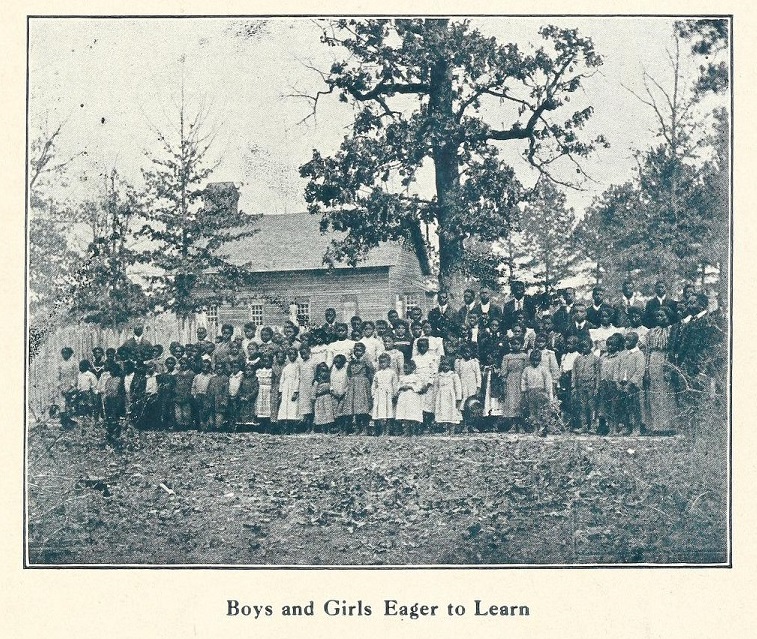Rural Schools

Boys and Girls Eager to Learn from Cover of Nature Study and Gardening for Rural Schools
(1910). George Washington Carver. Tuskegee Normal and Industrial Institute Experiement Station. Bulletin Number 18.
Carver’s innovative teaching methods and enthusiasm for his subjects proved inspirational to his [Tuskegee] students. Many, for example, took him up on his challenge to collect and identify various specimens. This sort of hands-on learning was related to the trend popular throughout the country at the turn of the century, though especially applied to rural, elementary school-age children, of integrating ‘Nature Study’ into the formal education of students. At the request of Liberty Hyde Baily, a Cornell horticulturalist and leader in that movement and in the wider agricultural reform efforts of the early twentieth century, Carver served on the editorial board of the national journal, The Nature-Study Review. Not surprisingly, Carver published bulletins from Tuskegee voted to Nature Study and issued ‘Farmers’ Leaflets’ from the institute’s aptly named ‘Bureau of Nature Study for Schools and Hints and Suggestions to Farmers.’ His pedagogy so impressed Booker T. Washington that Tuskegee’s president asked him to lead seminars for his fellow faculty members on how they might improve their teaching.
Hersey, M. (2006). "Hints and suggestions to farmers: George Washington Carver and rural conservation in the south." Environmental History, 11(2), pp. 245-246. Retrieved from: https://www.jstor.org/stable/3986231.
Carver created two Experiment Station Bulletins targeting rural schoolchildren specifically. This section of the exhibit features these two publications, along with a sample of educational works addressing issues of agricultural concerns published in the same time frame.
 An official website of the United States government.
An official website of the United States government.

